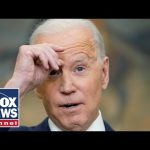President Donald Trump’s recent decision to pause tariffs for 90 days on most nations has sent shockwaves through global markets, sparking both relief and controversy. While the temporary suspension has eased tensions with some trading partners, the administration’s steadfast escalation against China, with tariffs now reaching a staggering 125%, underscores a broader strategy to reset global trade dynamics. This bold maneuver reflects Trump’s commitment to renegotiating trade relationships on terms he deems fair for American workers and businesses.
The 90-day reprieve applies to tariffs exceeding the newly established baseline 10% rate, which remains in effect for nearly all imports. This pause has provided breathing room for countries like Vietnam, South Korea, and the European Union, which faced steep tariff hikes of up to 46%. However, China remains excluded from this concession, as Trump continues to press Beijing on issues ranging from intellectual property theft to trade imbalances. The president’s hardline stance has drawn sharp criticism from Democrats and international leaders, but his supporters view it as a necessary step to hold China accountable and protect U.S. interests.
Markets responded dramatically to the announcement, with the S&P 500 surging by 7% in one of its best single-day performances since World War II. Despite this rally, uncertainty lingers over the long-term implications of Trump’s trade policies. Economists warn that the unpredictability of tariff announcements could deter investment and disrupt supply chains. Meanwhile, American farmers and manufacturers are grappling with higher costs due to the baseline tariff and retaliatory measures from affected nations. Critics argue that these policies risk alienating allies while exacerbating economic pressures at home.
Proponents of Trump’s approach emphasize its potential to realign global trade in America’s favor. By leveraging tariffs as a negotiating tool, the administration aims to compel trading partners to lower their barriers and increase imports of U.S. goods. Early signs of success include Vietnam’s willingness to engage in talks and Europe’s offer of zero-for-zero tariff agreements on industrial goods. These developments suggest that Trump’s strategy could yield significant concessions if sustained diplomatic efforts follow.
As the 90-day clock ticks down, all eyes are on whether this pause will lead to meaningful progress or merely delay further escalation. The stakes are high, with global markets and American industries hanging in the balance. While critics decry Trump’s tactics as reckless, supporters argue that his willingness to disrupt the status quo is exactly what is needed to secure a stronger economic future for the United States. Whether this gamble pays off remains uncertain, but one thing is clear: President Trump is reshaping the rules of global trade with boldness unmatched in recent history.




